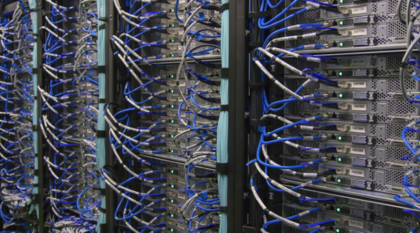The future of energy trading: navigating volatility and embracing automation
This blog summarises the SmartestEnergy Group’s Chief Technology Officer (CTO), Rob Pringle's view on the future of energy trading in a rapidly changing market. In the first of our three-part blog series Rob shares his views on the navigating volatility and embracing automation.

This blog summarises the SmartestEnergy Group’s Chief Technology Officer (CTO), Rob Pringle's view on the future of energy trading in a rapidly changing market. In the first of our three-part blog series Rob shares his views on the navigating volatility and embracing automation.
The UK energy market is undergoing a significant transformation, driven by increased integration of renewable energy sources and rapid technological advancements. In a recent episode of the Avanade UK Energy Insights series, Rob Pringle, CTO at SmartestEnergy, shared valuable insights during a conversation with Tarun Arora surrounding the future of energy trading, highlighting the key challenges and opportunities that organisations face in this dynamic sector. In this blog, Rob will share his predications and insights and what they signify for the evolution of energy trading.
Increasing price volatility
As I see it, the increased penetration of renewable assets into grids is creating greater short-term price volatility. This heightened volatility is attributed to the weather-dependent nature of renewables, like wind and solar, which drive unpredictable supply and price fluctuations. To effectively navigate this volatility and adapt to dynamic market conditions, it's essential that organisations enhance their tooling and optimisation strategies, asset management practices and communication systems.
The rise of algorithmic trading
Automation is another notable trend which is shaping the future of energy trading. I'm witnessing the growing availability of out-of-the-box, short-term algorithmic trading solutions. Whilst these tools offer increased efficiency and speed, I believe it's crucial for businesses to develop their own in-house competencies, to foster proprietary long-term trading capabilities that drive innovation and competitive advantage in the market.
The importance of oversight
As reliance on algorithmic trading increases, inherent risks become more apparent, notably a greater margin of error and their potential for unintended consequences. In my opinion, there's a real possibility for substantial financial losses due to faulty algorithms and inadequate oversight. Therefore, robust risk management and governance frameworks are crucial, offering preventative measures and clear lines of accountability to safeguard against these vulnerabilities.
Navigating the next era of energy trading
The future of energy trading will be shaped by price volatility driven by renewables, the continued rise of algorithmic trading and the critical need for robust oversight. The organisations that proactively adapt to these shifts, integrate technological advancements and prioritise robust risk management strategies will be best positioned to thrive in this dynamic and complex landscape.



